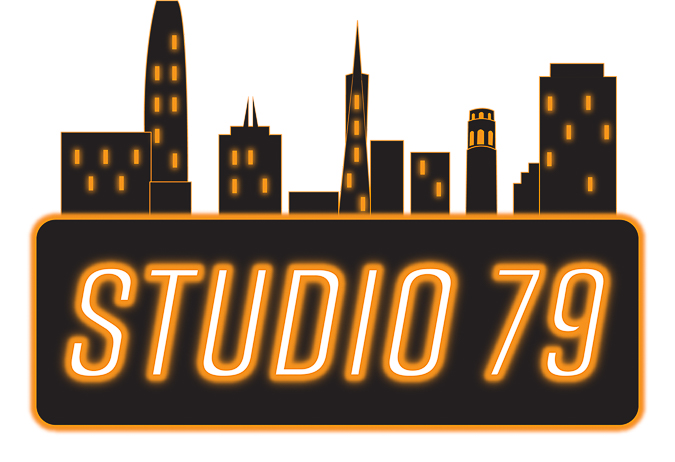By Nina Tabios
When stay-at-home orders were put in place this spring, there was no script for how long film and TV productions would be on pause. Although the situation seemed bleak for nearly every sector of entertainment, it appeared live TV was the quickest to adapt.
News broadcasts, daytime talk shows, even talent competition shows appeared to not miss a beat as they worked around the constraints of the pandemic. News anchors and TV reporters stood six feet apart in the studio; late-night hosts interviewed guests over Zoom. By summer, contestants on competition shows like “Dancing with the Stars” took to crowd-less stages, sacrificing live audience energy to be as safe on set as possible.
However, this new process wasn’t without its challenges. As a production intern at a small local news station in Redding, California, Ryan Gamboa, an Academy of Art University School of Communications & Media Technologies (COM) student, saw this new TV reality up close.
“There were people working from home, they had anchors that were sitting 10 feet apart,” said Gamboa. “Everybody had to go through all these different hoops and obstacles. You’re wondering, ‘Man, how hard can it be?’ But it really is difficult.”
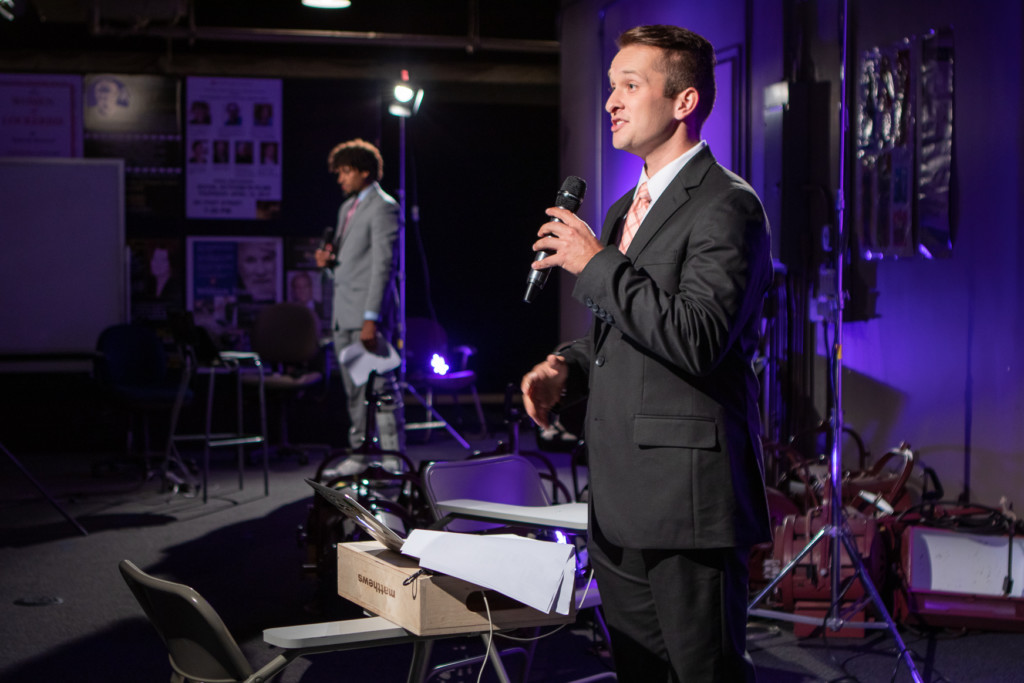
Gamboa would soon find out just how hard it is to put on a live broadcast during a pandemic. A few weeks after his internship ended, he joined 20-plus of his classmates at the Academy to develop and produce “Studio 79,” a live-to-tape talent show competition put together both in-studio and over Zoom. Led by COM Co-Directors Jan Yanehiro and Steve Kotton, it was an opportunity to try something new that the department had never done before.
“I was watching all the shows like ‘American Idol’ and ‘America’s Got Talent’ when they went on lockdown,” said Yanehiro, who is also a member of the Academy’s COVID-19 Task Force. “They started [recording] all these people wherever they are—‘America’s Got Talent’ had this couple who were dancing in India, and they had them Zoom in on the show. I thought, ‘We could do that.’”
“We could be socially distant, use remote cameras, and have as few people in-studio as possible,” Kotton said. “I thought, ‘Let’s try this. I think we can pull it off.’”
Production During a Pandemic
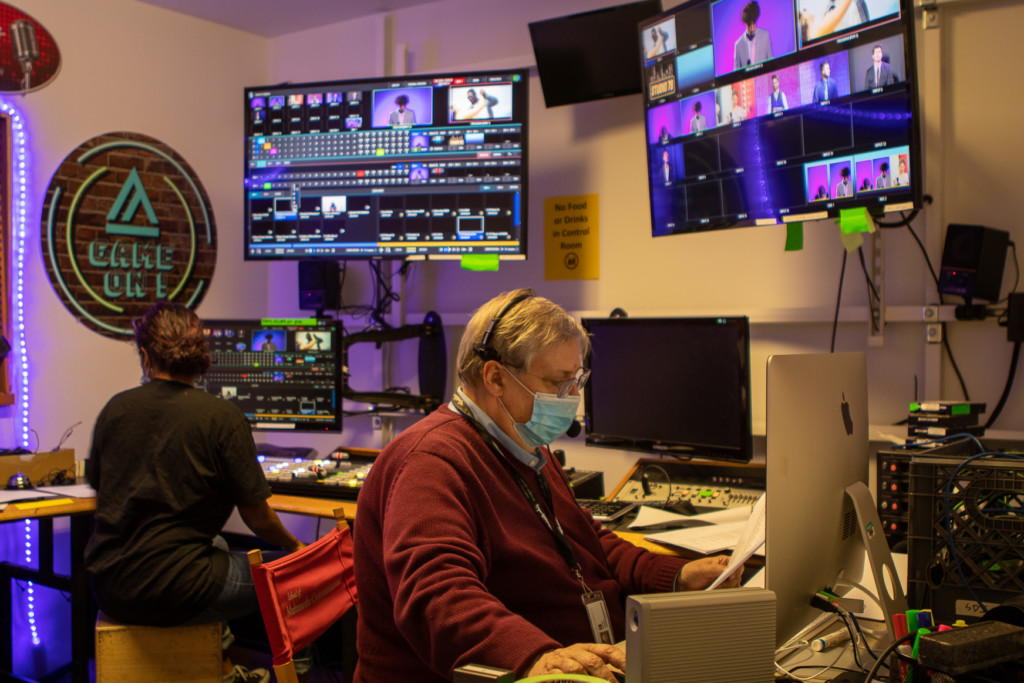
In past semesters, previous iterations of “Studio 79”—which is officially listed as COM 720: In-Depth Project: Studio Entertainment Series—was a high-energy production. Students worked as a team to deliver an hour of exciting performances in front of a live, in-studio audience. And it wasn’t just for a grade; contestants battled it out each week for the chance to win the grand prize: an all-expense-paid trip to audition at the competition series of their choice.
Normally, COM 720 is a class that requires in-person attendance. Students operate cameras and audio equipment and run the control room, while others speak on camera and interact closely with each other on set. Given the CDC guidelines encouraging social distancing, none of this seemed possible. On top of that, many students had flown back home out-of-state and even overseas.
“Since coming back in March, doing classes online was really different and tiring due to the time difference,” said Dinh Huynh, a COM student who returned home to Ho Chi Minh City in Vietnam. Although the “Studio 79” class met on Wednesdays in the U.S., Huynh signed on to Zoom on early Thursday mornings for class.
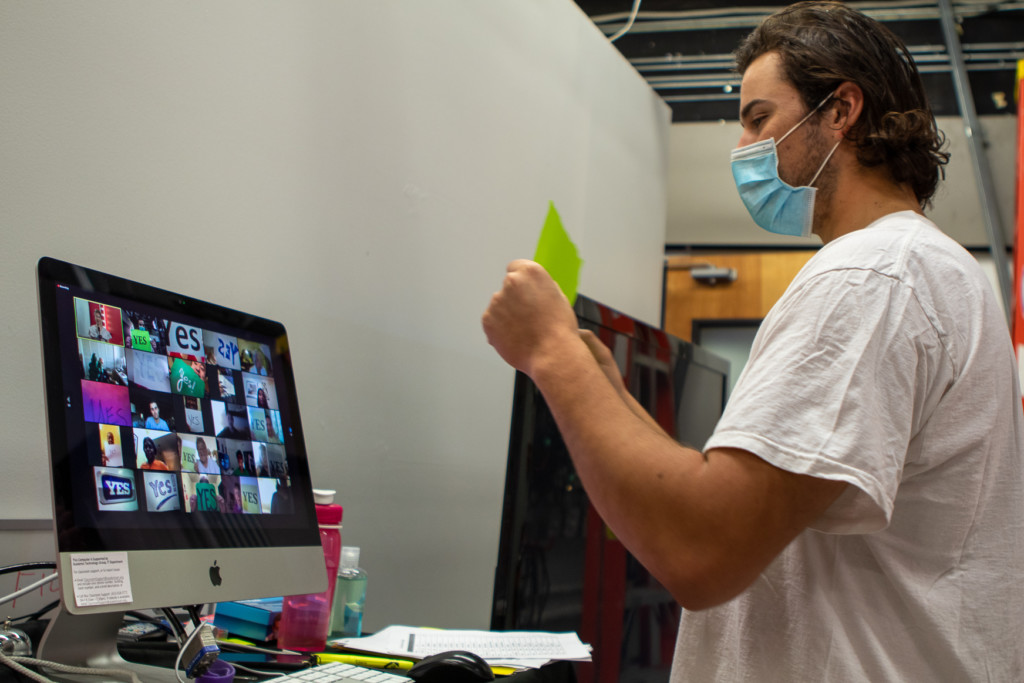
“For ‘Studio 79,’ I have to be awake from 4 a.m. to 8 a.m., Vietnam time,” she said.
But that didn’t stop her from being heavily involved in the class—from home, Huynh produced an episode, built the “Studio 79” website, designed graphics, and even made an appearance as a guest judge over Zoom. Several other students took initiative as well, taking on a number of roles and tasks from places like Los Angeles, St. George in Utah, and the Philippines.
“You can take on these big roles as producers and editors of the shows, and you don’t have to be here,” Yanehiro said. “Students are stepping up, and that’s the biggest a-ha moment: That even though you’re virtual or far away, you can be so much a part of a production like this in so many different ways.”
The first few weeks of class were held over Zoom as students brainstormed how exactly they were going to bring “Studio 79” to life. Even with a plan in place, there was still a lot of uncertainty. But, after some careful reconfiguring of the set, it only took a couple of practice runs for the students to have the confidence that they could bring the show to air.
Social Distancing on Set
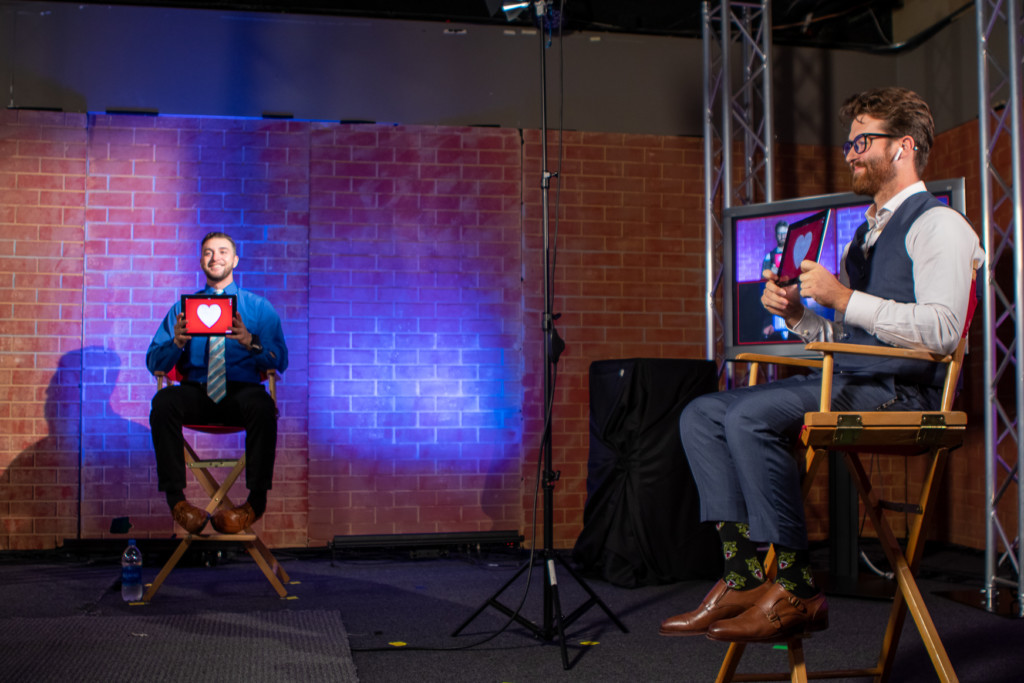
Gamboa was very familiar with how his “Studio 79” instructors ran their sets. In a previous season, he was a contestant who sang his way to the final round. Gamboa returned the following fall to run audio boards in the control room. This third time around, Gamboa wanted to try his chops as on-camera talent, specifically as a host.
Instead of introducing contestants in front of an enthusiastic crowd, Gamboa would be delivering his lines straight into a single camera, standing more than six feet away from his co-hosts, fellow COM students Adrian Byrd-Jelinek and Yi Li. Inside the studio, judges and hosts were spread out from the studio to around the hall in the theater, and they were only allowed to remove their masks when it was their turn to speak on camera.
“Doing the show this way has really made us try something that’s really out of our comfort zone,” Gamboa said. “I feel like every week we’re doing something new to add to the show. It might be rough, it may not work, but we’re going to try it and I think that’s really great.”
Students had to rethink many of the things they couldn’t do in a typical fashion. As a live-to-tape format, all of the “Studio 79” segments were pre-recorded then later spliced together into a complete episode. While most contestants shot their performances on their phones and sent them in via email, the tech team figured out they could set up remote cameras and microphones around contestant and School of Fashion student Megan Jefferson to capture her performance without anyone being in the room.
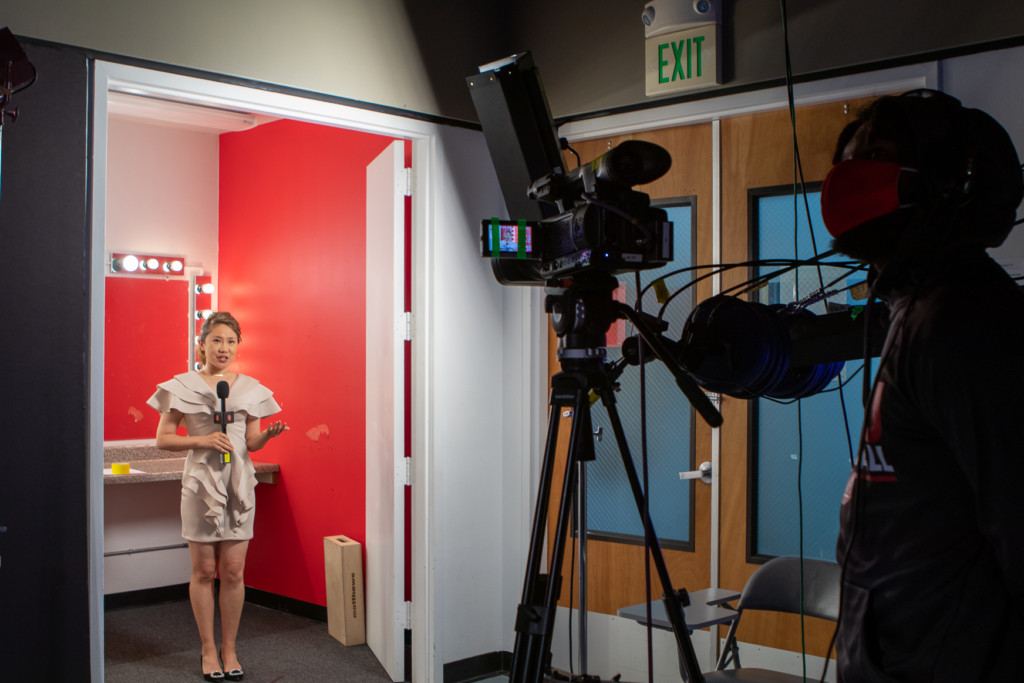
“We have this running joke that this is the editing bonanza show,” Gamboa said. “There’s so much editing that goes into the final product, but I think it’s showing all the different strengths of our department.”
Mahima Kotian, who is in the COM M.A. program, agreed. Although she had no prior experience working with cameras, lights, and audio, Kotton chose her as floor director because she was able to pick up the technical nuances rather quickly. She also valued the teamwork aspect, even when half of the class was spread across the globe.
“If I miss something, someone else will point it out, and, overall, that helps make the show better that way,” Kotian said. “Having that critique from the whole class, even people who are remote and just watching the show on Zoom, definitely helps.”
By the middle of the semester, Kotton was thrilled with the class’s progress.
“We’re stretching the technology, which is good—we have to do that—and I think that speaks well to the university,” Kotton said. “We have the technology, and we embrace technology that we can bend and weave as well.”
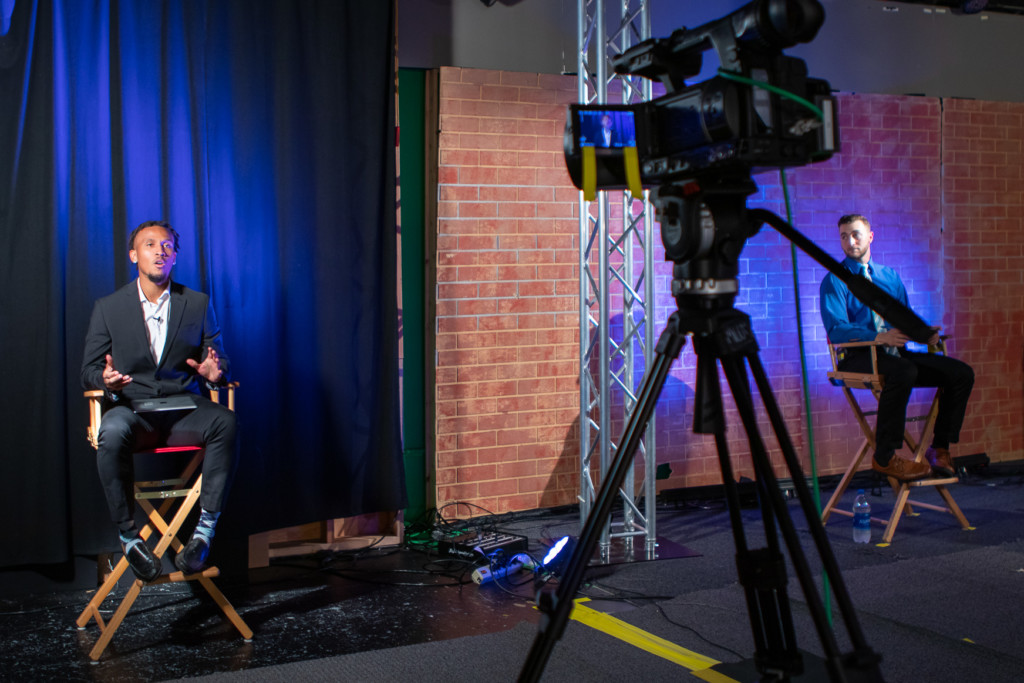
Taken by Storm
A talent show wouldn’t exist without talent, and just like the show’s organizers, many of the performers were in all corners of the world.
School of Music Production & Sound Design for Visual Media (MUS) student and DJ Julius Kreutzer competed from Berlin, Germany. Just a few time zones over, COM major Zhane Chan played his guitar in Sungai Petani, Malaysia. Finalist Kenderly Labissiere, from the School of Acting, and his Mu-vic Crew sent his clips in from Florida, while fellow finalist and MUS graduate student Stormy Montana sang from Dresden, Tennessee.
After seven weeks of performances, Gamboa announced Montana as the winner of the Academy’s first-ever global reality TV competition show.
“I feel really honored, honestly. I really do appreciate everyone who voted for me and the judges for their feedback and their confidence in me,” Montana said during her “Studio 79” finale interview. “I’ve loved the entire experience. I had a blast.”

Students in the class had to work closely with contestants, teaching them how to set up their phone cameras to capture different angles for their performances and the interviews for their backstories. Despite the unique circumstances, many of the contestants, including Montana, viewed “Studio 79” as a fun way to connect with the Academy.
“Normally, I wouldn’t have been able to participate, because I’m all the way in Tennessee,” Montana said. “It kind of gives me the opportunity to do it, and it opens up the availability to be a lot more inclusive—gives everybody a chance—and I think it’s a good thing.”
Montana brought a taste of the south to “Studio 79,” winning over the hearts of judges and Zoom audience members alike with her own renditions of songs like the Eagles’ “Desperado” and John Anderson’s “When It Comes to You.” The singer-songwriter once recorded her own EP of original country music in Nashville, and since then, she’s been learning the ins-and-outs of audio production at the Academy since 2012.
Being a part of the competition meant a lot for Montana. She shared that it gave her a chance to spread her voice and her music, but also maintain a connection with her peers at the Academy. Montana understood the hurdles that students faced in the studio and offered high praise for how the finished episodes turned out.
“The production quality on [‘Studio 79’] is wonderful, and they’re doing a fantastic job getting all of that together,” Montana said. “It makes me proud to be a part of the Academy. There’s more talent on that show than just the ones that are singing and performing, there’s a whole host of it with the entire production team.”
Final Credits
When asked what she’s going to remember most from the “Studio 79” class, Kotian replied she’ll carry everything she’s learned, from the studio set to the Zoom meetings.
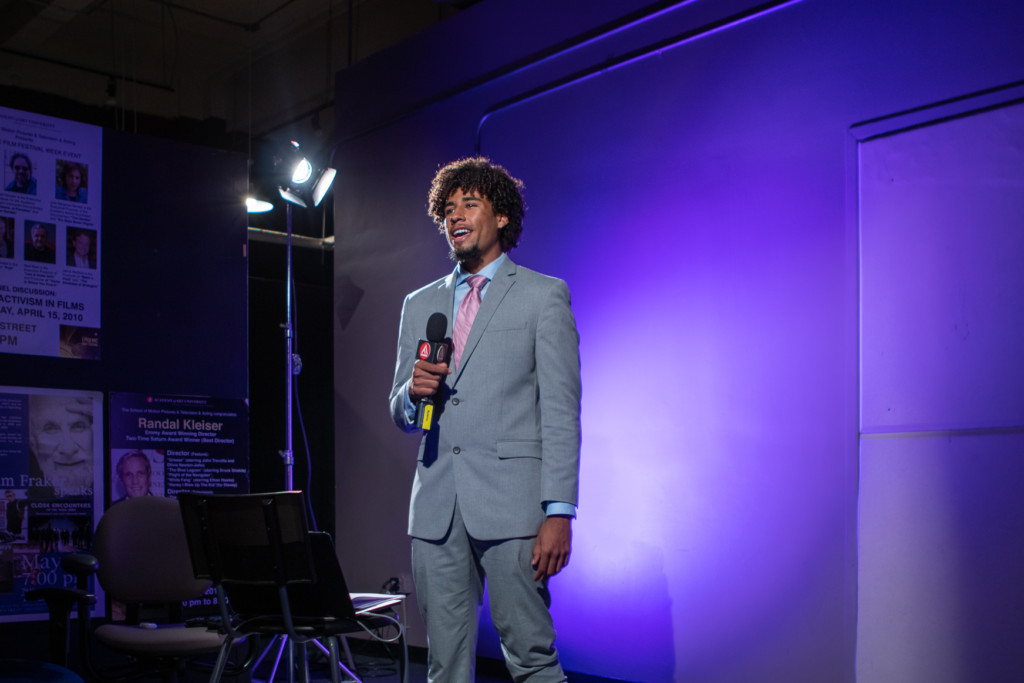
“Steve and other classmates taught me how to use the camera, how to set up lights so they don’t cast shadows, optimum technical skills for on set,” she said. “But also, teamwork—especially during COVID—before, I thought there’s no way to collaborate, but now, I definitely learned how to work with such a big team.”
Gamboa appreciated everyone’s ability to just experiment and try something different, even the instructors.
“We’re all asked to play a certain part in this, and so you start to see people coming out of their shells and finding their way,” said Gamboa. “We’re seeing our instructors grow too. I don’t think there are many other schools in the country that are putting their students in a position like this to try something that has never been done before.”
Kotton expressed similar praises for how, in just 10 weeks, their students learned how to effectively communicate and hold each other accountable.
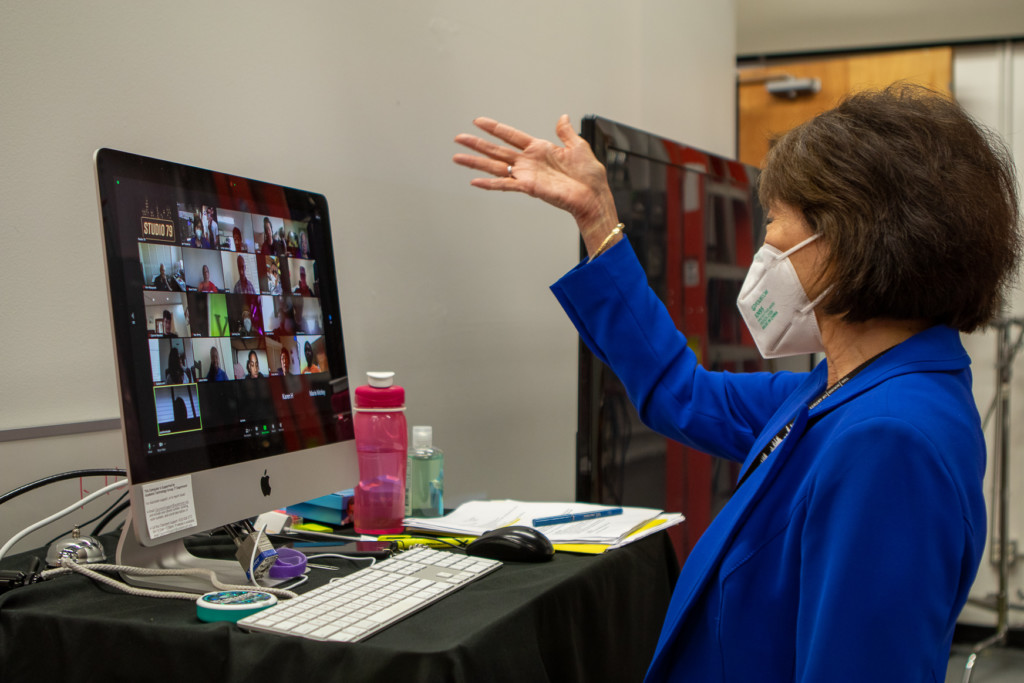
“They have really embraced the whole team concept and really taken it to another level,” said Kotton. “They’re filling in for one another and figuring out solutions themselves without a lot of guidance from us, and that’s impressive. That’s the real world, you got to be able to change and be flexible with the times.”
As for Yanehiro, she’s already thinking about what else they can do next fall.
“I’m hoping that I take all the lessons learned and keep moving it forward. Virtual, on-site, we can create new ways of learning, new ways of performing,” said Yanehiro. “We have accomplished what a lot of people thought was crazy and probably impossible to do at a level that I wanted it. But I’m convinced we got there—just watch the show.”
Watch “Studio 79” episodes on Instagram at @studio79artu.
